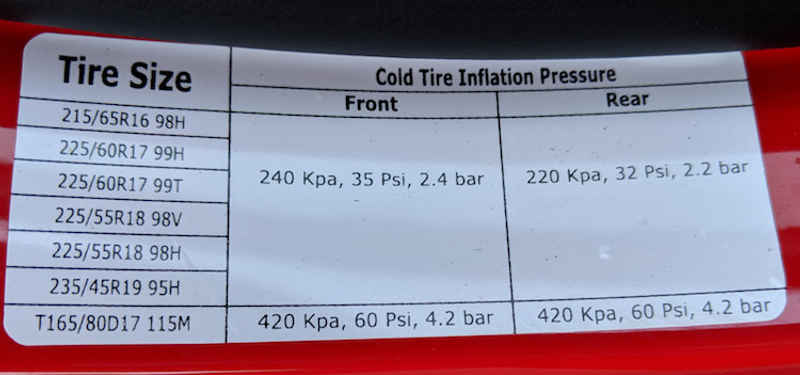In order to ensure a smooth and safe drive, it's important to keep the car tyre pressure
Somewhere on the tyre sidewall, you can find the pressure written clearly. For example, "max pressure 30 PSI". This denotes the maximum cold pressure required by the tyre to carry its maximum load. Cold pressure implies the time you’re filling up your tyres which is when they're cold. Generally, the tyre pressure is somewhere between 30 and 35 PSI depending on the kind of car you own. Your vehicle's owner manual will state the suitable car pressure for tyres, and you need to ensure that the pressure is checked regularly. Maintaining the correct car tyre pressure is needed in order to prolong the life of your tyres, enhance vehicle safety as well as maintain fuel efficiency.
What happens if you over-inflate your tyres?
In short, it reduces the life of your tyres. Putting too much air can be quite risky and expensive. If your tyres are over-inflated, the

It's not like the air is being lost from your tyres, but
Tyres can be under-inflated if you don't check them regularly. Under-inflated tyres are bound to have uneven contact with the road and will have frequent wear and tear if they are left under-inflated. Remember to check the tyre pressure with the help of a tyre pressure gauge, that too, when your tyres are cold.
How Frequently Should I Check the Tyre Pressure?
Needless to say, the tyre pressure should be checked on a regular basis - but how regular? It is better to check once every two weeks. This will ensure that the tyre pressure level is correct and if it isn't you can take preventive measures to evade major problems in future. In the case of winters, you can check the tyre pressure every week because cold weather can reduce the air pressure inside the tyres. Also, if you are leaving for a long journey, you can check the tyre pressure beforehand, so that there are no problems faced on the way.
The correct pressure rating depends on your vehicle and varies as per their make and model. It is not a tough or